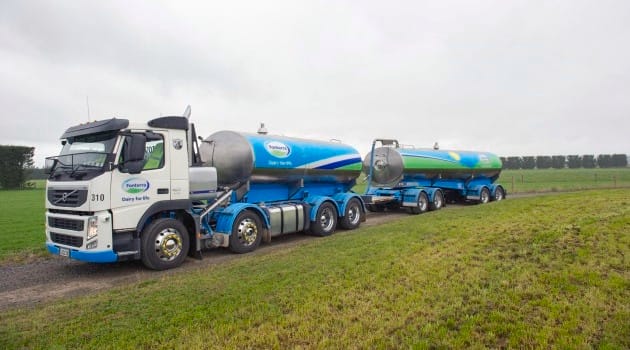As New Zealand marks the one-year anniversary of its Free Trade Agreement (FTA) with South Korea, Fonterra Co-operative Group is gearing up to take advantage of huge potential for its dairy products there, particularly cheese.
Since the FTA was signed in December 2015, New Zealand has experienced 16 per cent growth in exports of food and beverage products to Korea.
The country is New Zealand’s fifth largest cheese market, worth US$50 million (NZ$70m) a year – comparable to New Zealand’s cheese trade to the United States.
New Zealand’s new annual duty free quota of 7000 metric tonnes (MT) of cheese to Korea will increase by three per cent a year.
Tariffs on cheddar and block mozzarella will be removed after seven and 12 years respectively, with all cheese tariffs eliminated and quotas removed after 15 years.
Quotas and tariffs on butter, anhydrous milk fat and infant formula will also be phased out over 15 years.
Fonterra has seen strong interest in its products off the back of the Agreement, reflecting the growing demand for high quality dairy in Korea, Jason Murney, Fonterra’s Country Manager Korea, said.
“A lot of our existing customers and new customers are approaching us to develop new business opportunities,” he said.
“The FTA will help Fonterra deepen its commercial relationships in the market over time, as our access continues to increase.
“We have already seen positive results, with government import statistics showing that New Zealand’s share of the Korean cheddar market has grown to over 60 per cent in 2016, up from 50 per cent in 2015.”
So far Fonterra has developed a new cheese specifically designed for use on pizzas, which will be launched in Korea. This will help the Co-operative meet Koreans’ growing taste for pizza and fusion foods.
Fonterra has expanded its Korea team and is investing in a warehouse so that it can import and distribute more high value products itself.
Consumption of dairy products is rising in Korea, as dietary trends follow those of neighbouring Asian countries such as Japan. In 1990 Koreans consumed 43.8kg liquid milk equivalent per capita but by 2014 that had risen to 72.4kg.
The access under the FTA allows Fonterra to invest in product and supply chain innovations, and implement a strategy to transition its Korean business from low risk ingredients to higher value food service.
“The development of the Korean market is absolutely in line with Fonterra’s strategy of moving more milk volumes into higher margin products, thus earning greater returns for our farmer shareholders,” Murney said.

